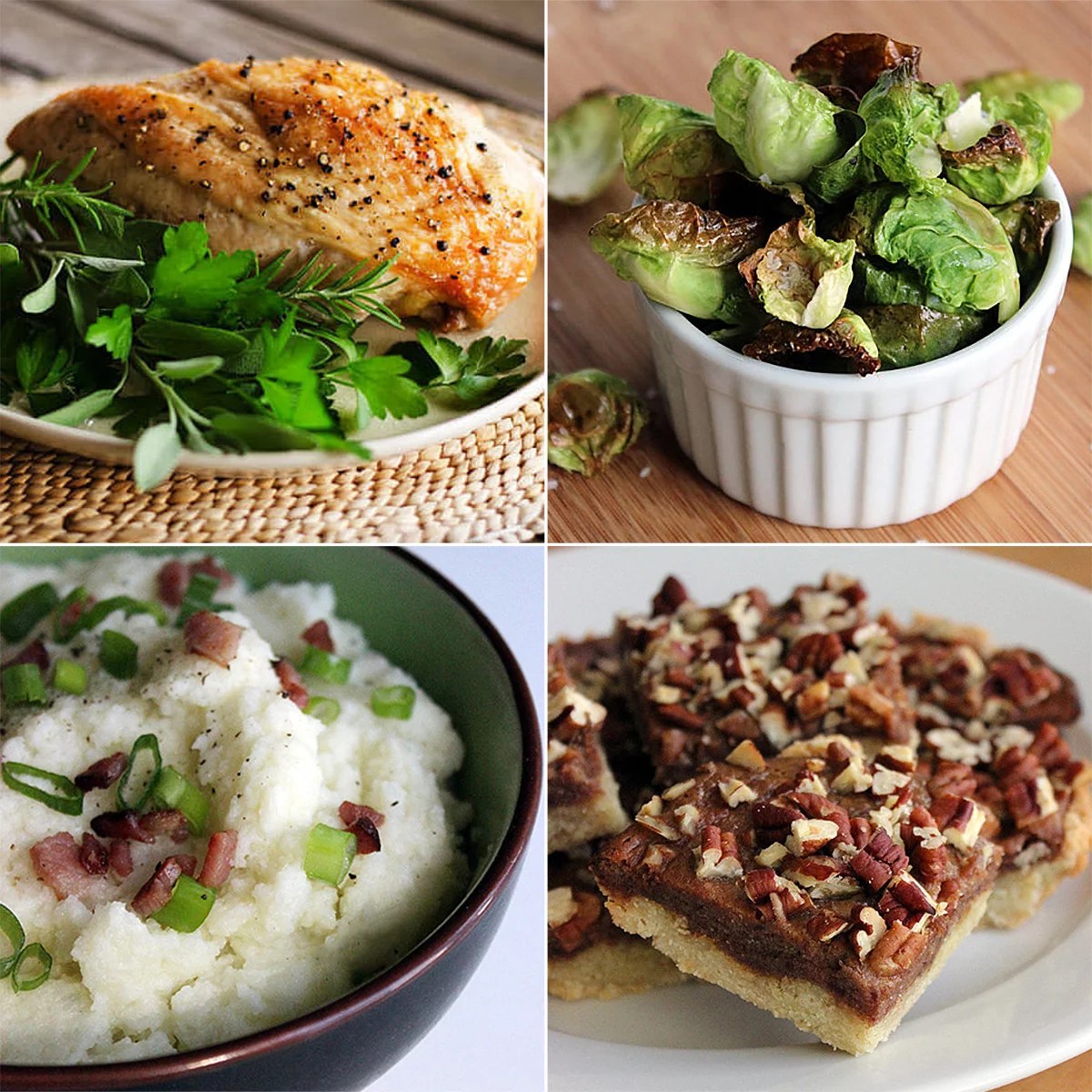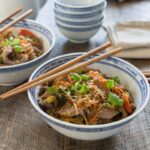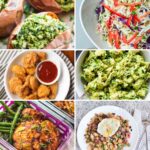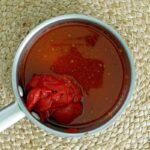Fuel your active life with the power of Paleo! This comprehensive guide dives deep into the world of high-protein Paleo recipes, designed to optimize energy levels, support muscle recovery, and enhance athletic performance. We’ll explore delicious and nutritious breakfast, lunch, dinner, and snack options, all crafted with busy lifestyles in mind. Learn to master meal prepping techniques for effortless adherence to this energizing diet, and discover how to adapt recipes to accommodate various dietary needs and fitness goals.
From quick and easy weeknight dinners to energizing pre-workout snacks, this guide provides a wealth of practical, visually appealing recipes and expert advice to help you thrive on a high-protein Paleo diet. We’ll uncover the secrets to maximizing the nutritional benefits of healthy fats and protein sources, ensuring sustained energy and optimal muscle recovery. Prepare to transform your relationship with food and fuel your body for peak performance.
High-Protein Paleo Lunch & Dinner Recipes
Fueling an active lifestyle requires a diet rich in high-quality protein, and the paleo diet offers a fantastic framework for achieving this. These recipes prioritize quick preparation times, perfect for busy individuals who demand both nutrition and convenience. Each recipe emphasizes lean protein sources and nutrient-dense vegetables to maximize your energy levels and support muscle recovery.
Quick Paleo Lunch and Dinner Recipes
These five recipes showcase the versatility of the paleo diet and offer a delicious variety of flavors and textures. Each recipe is designed for swift preparation, ensuring you can enjoy a healthy and satisfying meal even on your busiest days.
- Sheet Pan Lemon Herb Chicken and Veggies:
- Toss bite-sized chicken breasts and chopped vegetables (broccoli, bell peppers, zucchini) with olive oil, lemon juice, garlic, and herbs (rosemary, thyme).
- Spread on a baking sheet and roast at 400°F (200°C) for 20-25 minutes, or until chicken is cooked through.
- Salmon with Roasted Asparagus:
- Season salmon fillets with salt, pepper, and dill.
- Roast alongside asparagus spears tossed with olive oil and salt at 400°F (200°C) for 12-15 minutes.
- Ground Beef and Cauliflower Rice Stir-Fry:
- Sauté ground beef with onions and garlic.
- Add riced cauliflower, broccoli florets, and your favorite stir-fry sauce (coconut aminos, ginger, garlic).
- Cook until heated through.
- Tuna Salad Lettuce Wraps:
- Mix canned tuna with mayonnaise (avocado oil-based), celery, red onion, and seasonings.
- Serve in crisp lettuce cups.
- Quick Shrimp Scampi with Zucchini Noodles:
- Sauté shrimp with garlic, butter (or ghee), lemon juice, and red pepper flakes.
- Toss with zucchini noodles and serve immediately.
Comparison of Protein Sources
The recipes utilize a variety of high-protein sources, each offering unique nutritional benefits and considerations.
- Chicken Breast: Lean protein source, excellent source of niacin and selenium. Potential drawback: can be dry if overcooked.
- Salmon: Rich in omega-3 fatty acids, vitamin D, and protein. Potential drawback: can be higher in mercury depending on source; choose wild-caught sustainably sourced salmon whenever possible.
- Ground Beef: Good source of iron and protein. Potential drawback: can be high in saturated fat if not lean; choose grass-fed beef for improved nutritional profile.
- Tuna: Convenient and readily available source of protein. Potential drawback: high in mercury in some species; opt for canned tuna packed in water or olive oil, and choose sustainably sourced options.
- Shrimp: Low in calories and high in protein. Potential drawback: can be high in cholesterol; consume in moderation.
Creative Leftover Protein Incorporation
Minimizing food waste is essential. Here are three innovative ways to repurpose leftover cooked proteins:
- Protein-Packed Paleo Frittata: Whisk eggs with leftover cooked chicken, salmon, or beef, along with chopped vegetables. Bake in a muffin tin for individual portions or in an oven-safe skillet for a larger frittata.
- Paleo Salad Boost: Add leftover cooked protein to your favorite paleo salad. Grilled chicken, shrimp, or even shredded beef can transform a simple salad into a hearty and satisfying meal. Imagine a vibrant salad with leftover salmon, avocado, mixed greens, and a lemon vinaigrette.
- Paleo Soup Enhancement: Leftover proteins can be easily incorporated into soups and stews. Chicken broth with shredded leftover chicken, beef stew enhanced with leftover beef, or a vibrant vegetable soup with added shrimp, can all add protein and flavor to your meal. Visualize a hearty bone broth soup with chunks of leftover roasted chicken and root vegetables.
High-Protein Paleo Snacks for Energy & Recovery

Fueling your body with the right nutrients before and after intense workouts is crucial for optimal performance and recovery. These high-protein paleo snacks provide a convenient and effective way to replenish energy stores and support muscle repair, ensuring you’re ready for your next challenge. They are designed to be quick and easy to prepare, fitting seamlessly into even the busiest active lifestyle.
High-Protein Paleo Snack Recipes
The following recipes offer a diverse range of flavors and textures, all while adhering to paleo principles and delivering a substantial protein boost. Each snack is carefully designed to provide a balance of macronutrients, supporting both immediate energy needs and long-term muscle recovery.
| Name | Ingredients | Preparation Steps |
|---|---|---|
| Hard-Boiled Eggs with Avocado Slices | 2 hard-boiled eggs, ½ avocado, pinch of sea salt | Slice the avocado and arrange it alongside the halved hard-boiled eggs. Sprinkle with sea salt. |
| Macadamia Nut and Beef Jerky Trail Mix | ¼ cup macadamia nuts, 2 oz beef jerky (unsweetened), 1 tbsp unsweetened shredded coconut | Combine all ingredients in a bowl or bag. The macadamia nuts provide healthy fats and the beef jerky delivers a powerful protein punch. |
| Salmon Bites with Celery Sticks | 4 oz canned wild-caught salmon (packed in water), 2 celery sticks | Drain the salmon and mix with a little salt and pepper if desired. Serve with celery sticks for dipping. The omega-3 fatty acids in the salmon support anti-inflammatory processes. |
| Chia Seed Pudding with Berries | 2 tbsp chia seeds, ½ cup unsweetened almond milk, ¼ cup mixed berries | Combine chia seeds and almond milk in a jar or container. Refrigerate for at least 30 minutes, or preferably overnight, until the chia seeds have absorbed the liquid and formed a pudding-like consistency. Top with berries before serving. |
| Apple Slices with Almond Butter | 1 medium apple, sliced, 2 tbsp almond butter | Spread almond butter evenly onto apple slices. The combination of natural sugars from the apple and healthy fats and protein from the almond butter makes this a satisfying and energizing snack. |
The Role of Protein and Healthy Fats in Muscle Recovery
Protein is the fundamental building block of muscle tissue. After intense exercise, muscles experience microscopic tears. Protein consumption provides the amino acids necessary for repairing and rebuilding these tissues, promoting muscle growth and reducing muscle soreness. Healthy fats, particularly those rich in omega-3 fatty acids, play a crucial role in reducing inflammation, a common response to strenuous activity. This anti-inflammatory effect helps accelerate the recovery process, minimizing discomfort and speeding up the return to optimal performance.
Incorporating Nuts and Seeds into High-Protein Paleo Snacks
Nuts and seeds are nutritional powerhouses, offering a concentrated source of protein, healthy fats, fiber, and various micronutrients. Almonds, for example, are rich in vitamin E and magnesium, while chia seeds are packed with omega-3 fatty acids and fiber. Macadamia nuts provide monounsaturated fats that support heart health. Incorporating a variety of nuts and seeds into your paleo snacks ensures a diverse intake of essential nutrients, further enhancing recovery and overall well-being. For instance, adding pumpkin seeds to a trail mix contributes zinc, crucial for immune function and wound healing, a significant factor in post-workout recovery.
Embarking on a high-protein Paleo journey doesn’t have to be daunting. With the right knowledge and resources, you can easily create delicious and effective meal plans that support your active lifestyle. This guide provides the foundation you need—from understanding the nutritional benefits of key ingredients to mastering efficient meal prep strategies. By embracing these recipes and techniques, you’ll not only fuel your body for optimal performance but also discover the joy of vibrant, healthy eating. Prepare to experience a new level of energy, strength, and well-being!
Commonly Asked Questions
What are the best protein sources for a high-protein Paleo diet?
Excellent protein sources include grass-fed beef, poultry, wild-caught fish, eggs, and various organ meats. Prioritize lean cuts to minimize fat intake if necessary.
Can I still lose weight on a high-protein Paleo diet?
Yes, weight loss is possible. Focus on whole, unprocessed foods and manage portion sizes. Prioritize lean protein sources and healthy fats, while limiting starchy vegetables.
How much protein should I consume daily on a high-protein Paleo diet?
The ideal daily protein intake varies depending on factors like activity level, body weight, and fitness goals. Consult a nutritionist or dietitian for personalized recommendations.
Are there any potential drawbacks to a high-protein Paleo diet?
Potential drawbacks include potential for nutrient deficiencies if not carefully planned, kidney stress with extremely high protein intake, and digestive issues for some individuals. A balanced approach and consultation with a healthcare professional are recommended.


